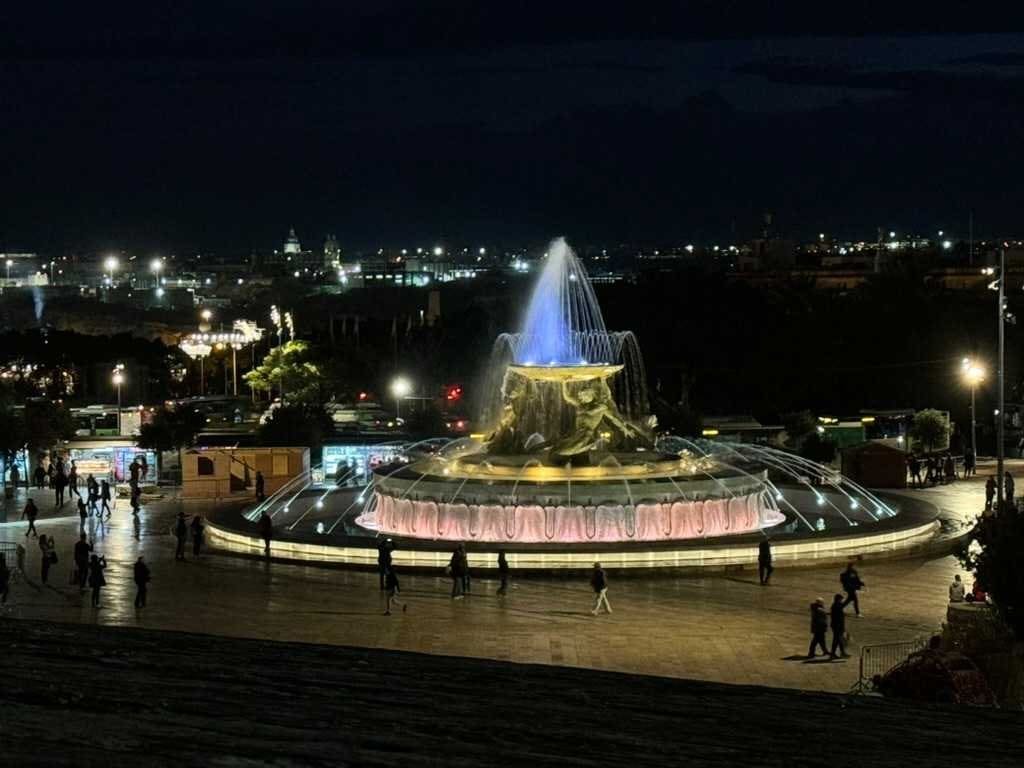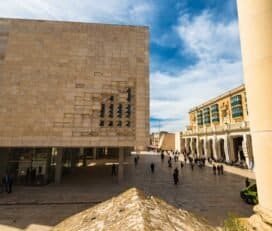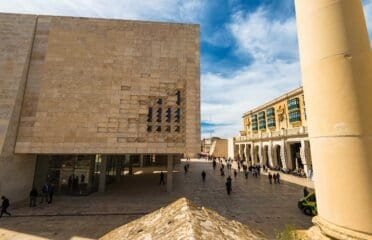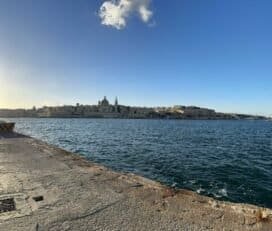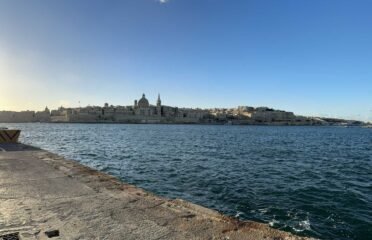Tritons’ Fountain – Valletta, Malta
Overview
Tritons’ Fountain is one of the most iconic landmarks in Valletta, Malta, and serves as a symbolic gateway into the historic capital. Located just outside the City Gate at Freedom Square, the fountain features three massive bronze Tritons — mythological sea gods — holding up a large basin. Designed by local sculptor Vincent Apap and inaugurated in 1959, the fountain has become both a meeting point for locals and a must-see attraction for visitors. After a major restoration completed in 2018, it now shines as one of the Mediterranean’s most impressive public fountains, blending artistry, mythology, and modern engineering.
Why Visit
- See one of Malta’s most photographed landmarks at the entrance to Valletta
- Admire the impressive bronze sculptures inspired by classical mythology
- Relax at a popular gathering spot for locals and tourists alike
- Witness the fountain illuminated at night for a magical atmosphere
- Combine your visit with a stroll through Valletta’s UNESCO-listed streets
Highlights
- The Bronze Tritons: Three muscular sea gods symbolizing Malta’s connection to the Mediterranean
- The Grand Basin: A massive bowl supported by the Tritons, restored to its original design
- Nighttime Illumination: A dazzling display of lights and water, creating one of the city’s most romantic views
- Public Plaza: A vibrant open space where cultural events, concerts, and gatherings often take place
History & Cultural Significance
The Tritons’ Fountain was commissioned in the 1950s as part of a modernization effort at Valletta’s entrance. Designed by Maltese sculptor Vincent Apap and draughtsman Victor Anastasi, it was unveiled in 1959 and quickly became a beloved national symbol. Over the decades, however, the fountain suffered from weathering and structural damage, with its original basin collapsing in the 1980s. For years, it stood in a diminished state until a comprehensive restoration began in 2016. Completed in 2018, the project restored the fountain to its original design, reinforcing its role as both an artistic masterpiece and a civic landmark. Today, the Tritons represent strength, resilience, and Malta’s enduring ties to the sea.
Typical Costs & Tickets
Visiting Tritons’ Fountain is completely free. As a public landmark in an open plaza, it can be admired day or night without entry fees. Guided city tours of Valletta often include the fountain as a starting or ending point, with prices varying depending on the tour provider.
Best Time to Visit
The fountain is striking at any time of day, but many visitors recommend seeing it both in daylight and after sunset, when it is beautifully illuminated. Early mornings are peaceful, with fewer crowds, while evenings bring a lively atmosphere as people gather before heading into Valletta’s restaurants and cultural venues. Summer evenings are particularly vibrant, with open-air concerts and events often held nearby.
Nearby Experiences
Because of its location at the entrance to Valletta, the Tritons’ Fountain is surrounded by must-see attractions. Within walking distance are the City Gate, the Parliament House, and the Royal Opera House ruins. Inside Valletta, you can explore the St. John’s Co-Cathedral, Upper Barrakka Gardens, and the bustling Republic Street. Just across the Grand Harbour, the Three Cities offer historic waterfronts and traditional Maltese culture.
Travel Tips
- Visit in the evening to see the fountain dramatically lit against Valletta’s skyline
- Bring a camera — the Tritons’ Fountain is one of the most photographed sites in Malta
- Wear comfortable shoes, as the fountain is right at the start of Valletta’s pedestrian-friendly streets
- Consider joining a guided walking tour that begins at the fountain for historical context
- During festivals like Carnival or Independence Day, the plaza is especially lively with events
Fun Facts & Local Legends
- The Tritons are inspired by classical mythology, representing half-man, half-fish sea gods
- The original design collapsed in 1980 when the basin fell, damaging the statues — the 2018 restoration corrected this
- The fountain has appeared in countless Maltese postcards, travel posters, and films
- It is a favorite meeting point for locals, often referred to simply as “the Tritons”


